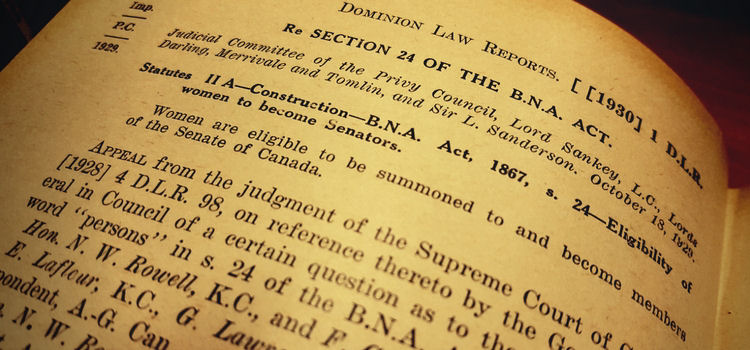Today, October 18, we celebrate Persons Day: the day on which in 1929 the historical decision was made to include women in the legal definition of “persons” under the B.N.A. Act, 1867. The decision itself, officially cited as Edwards v. Canada (Attorney General), was handed down by our highest court of appeal, the Judicial Committee of the Privy Council of Great Britain.
Agnes Macphail was the first woman to be elected to the House of Commons in 1921, but the Senate still remained off limits due to the narrow interpretation of “persons” found in s. 24 of the British North America Act. The text of that section read at the time:
The governor general shall from time to time, in the Queen’s name, by instrument under the Great Seal of Canada, summon qualified persons to the Senate; and, subject to the provisions of this Act, every person so summoned shall become and be a member of the Senate and a senator.
In their decision, Lord Sankey wrote for the committee that “The British North America Act planted in Canada a living tree capable of growth and expansion within its natural limits. […] Their Lordships do not conceive it to be the duty of this Board — it is certainly not their desire — to cut down the provisions of the Act by a narrow and technical construction but rather to give it a large and liberal interpretation” ([1930] 1 DLR 98 at 106-107). This new concept of constitutional interpretation would come to be known as the living tree doctrine.
On October 18, 1999, Governor General Adrienne Clarkson unveiled a Women Are Persons! monument at the Olympic Plaza in Calgary, Alberta, which commemorated this historic legal decision. A similar monument honoring the Famous Five was erected in Ottawa and can be seen near the East Block on Parliament Hill.
We also have a book on this topic here at the library: The Persons Case by Robert J.Sharpe and Patricia I. McMahon.
Read More
- Full Case Decision on Bailii [pdf]
- The Canadian Encyclopedia: Persons Case
- #BecauseOfHer: Persons Day
- The Famous Five

